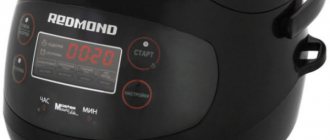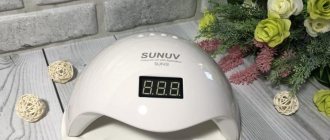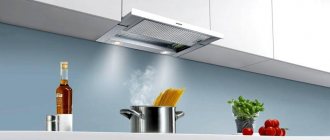Design features of the equipment
Existing pumping stations differ in design, since models are produced for domestic and industrial use. Powerful devices use wide frames. Models with a protected electric motor are suitable for dachas, but special features are taken into account.
- Hydraulic accumulator type.
- Dimensions of the structure.
- Pressure gauge and other instruments.
- Volume of the container for storing water.
- Type of pressure switch.
- Pumps are installed in the front, however there are exceptions. Surface units are the most common, submersible stations are considered less frequently.
Silent water supply pumping stations for a private home
Modern technologies do not stand still, which makes it possible to purchase technological innovations now that guarantee quiet operation and longevity of the equipment. It is worth understanding that the degree of noise from it also depends on the correct choice of equipment.
New generation pumping stations are made in such a way that the operation of the motor is almost inaudible, but as a rule, such a product costs a lot of money. Even if you buy such a station, after some period of time it will have to be repaired, and this will also cost a pretty penny. Today there is a large choice and everyone decides for themselves what is best for them.
What is better: a pumping station or a submersible pump?
For autonomous water supply at the dacha, in addition to pumping stations, submersible models are considered and it is necessary to analyze all their features. The first and second options are suitable for supplying water, but the following nuances are taken into account:
- Distance to the source.
- Well diameter.
- Water purity.
- Pressure level.
- Pump installations are more common because they demonstrate stable operation. They are more convenient to maintain. Submersible pumps, in turn, are effective in the industrial sector, where water is extracted from deep wells and large volumes are required.
Choosing a place in the country to install a pumping station
It is important in advance, even before purchasing a pumping station in a store, to decide on the location of its installation. The size of the site and distance from the house or water source can play an important role when choosing a unit. There are three options for installing a pumping station:
- in close proximity to a water source (well or well);
- directly in the premises of a country house (only quiet station models are suitable);
- in utility garden rooms on a summer cottage.
Attention! With any chosen option, if the pumping station will be operated in winter (at negative air and ground temperatures), it is necessary to lay the pipes of the water supply system into the ground below its freezing level, and insulate the places where they exit the ground and enter the house. The pumping station can only be used in winter if it is installed in a heated room. If you do not use your dacha in winter, before frost sets in, the pumping station must be completely dismantled and moved indoors. In the latter case, the remaining water must be drained from the station.
Selecting a model based on specific characteristics
When a person is faced with choosing a product, he will learn about many characteristics that affect the cost. Manufacturers work according to an individual strategy, but basic indicators are taken into account:
- Tank size.
- Water pressure.
- Operating power.
- Mains voltage.
- Water intake depth.
Calculation of pump performance
Before purchasing products, a performance calculation is made. For this purpose, the chemical composition of wastewater and the amount of precipitation are taken into account. An on-site specialist determines the height of the liquid rise. The pump must cope with the increased pressure. In populated areas, this parameter is unstable, so there is a large load on the electric motor. The average model with a power of 1200 watts provides a throughput of 4 cubic meters per hour. If the diving depth is less than 10 meters, 1000 watt equipment is enough. Compact models are produced with an average power of 800 watts.
Maximum water intake depth
Pumping stations are capable of operating in wells of different depths. The standard model is sold with a pumping capacity of up to 10 meters. Sometimes the groundwater level exceeds this mark and more powerful pumps are used. If we consider 800-watt models, they have a throughput of 3.7 cubic meters per hour and draw water from a depth of 9 meters. There are universal models with a pressure of more than 30 meters, their power is 4000 watts, and a productivity of 40 liters per minute is provided.
Hydraulic accumulator tank volume
A hydraulic accumulator tank is otherwise called an expansion tank or a membrane tank. The main task is to maintain stable pressure that is created in the water supply. Automatic stations are produced with various protections; the pressure is shown through a pressure gauge. Problems with pressure surges are often associated with the electric motor. There are devices on the market with hydraulic accumulators with a capacity of 10 liters or more. If we consider an 800 W model, it can use a 20-25 liter tank. More powerful products are equipped with 30 liter expanders. The choice of hydraulic accumulator depends on various factors.
- Relay operation frequency.
- Electric motor reliability.
- Pump activation system.
- Average pressure in the system.
- Water compressibility coefficient.
- Fluid flow rate.
Water pressure in the system
One of the most important characteristics of the product is water pressure. Not everyone is familiar with setting up equipment. Before purchasing, it is important to determine the flange adjustment and learn the principles for eliminating malfunctions. The pressure in the pipeline changes, so the main task is to ensure stable pressure. Mid-price devices provide a pressure of 40 meters. Units with a 20-liter hydraulic accumulator are more productive, much depends on the engine. Considering small wells, a pressure of 25 meters is enough. If we are talking about deep wells (more than 5 m), the figure should be more than 40 meters. When calculating pressure, the following characteristics are taken into account:
- Hydraulic accumulator volume.
- Maximum suction depth of the pump.
- Motor power.
- Equipment set.
Power and voltage
Manufacturers provide a wide range and there is plenty to choose from. Stations differ in power and voltage, much depends on the area of use. Not only synchronous, but also asynchronous AC motors with voltages of 220, 380 volts and more are presented. Power starts from 500 watts. Various protections are offered, the buyer pays attention to the following features:
- Rotor winding.
- Number of phases.
- Availability of starting devices. If there are problems with the network at the dacha, it is better to use protected stations that are not afraid of short circuits. The most common are pumps with asynchronous motors, with a rated power of 800 W or more. Such models operate at a voltage of 220 volts, they are suitable for pumping clean. You can hope for a capacity of 60 liters per minute and provide a pressure of more than 30 liters.
Unit type and functionality
Stations are classified according to different features. First of all, the type of water is taken into account - it can be clean, slightly polluted, or dirty. Universal models are sold, and consumers evaluate the type of case. Various materials are offered in this regard:
- Alloy of aluminum and steel.
- Brass.
- Stainless steel.
- Aluminium alloy.
- Plastic. Models are supplied with a 5 and 25 liter hydraulic accumulator. The pressure parameter depends on the relay. In 2021, users often prefer devices with remote control. There are interesting products from European manufacturers with high-quality centrifugal pumps. Self-priming models are used with or without a filter. Additionally, the devices differ in the size of the connected pipe. The pump is provided with 1, 1.2, 1.5 inch connectors. The hydraulic accumulator is also made of different materials; interesting models with an aluminum or brass tank are offered.
Leading equipment manufacturers
Italian stations Marina and Pedrollo:
- Marina systems are mounted in a cast iron casing that is resistant to external mechanical influences. They lift water automatically from a depth of up to 25 m while maintaining stable pressure in the system. The productivity of the installations is up to 2.5 thousand liters per hour.
- Pedrollo stations are distinguished by a variety of models, among which you can choose the best option for any purpose. Productivity ranges from 2 to 9.6 thousand liters per hour, engine power is 0.0-1.3 kW, storage tank capacity is up to 60 liters.
German equipment Karcher and Wilo:
- Karcher stations are fully automated, low maintenance and low energy consumption. A 0.9 kW engine can provide productivity up to 3.8 thousand liters per hour.
- Wilo systems are highly reliable due to the introduction of protection against dry running and condensation. Consumers have the opportunity to choose from a wide range of models with a power from 0.5 to 1.6 kW and a tank volume of 8.-60.0 liters.
Domestic Gilex stations:
- Reliable and simple devices mounted in plastic or steel cases, depending on the power and price category of the station. There are models on the market with a power of 0.5-1.1 kW, with a capacity of 2.7-4.2 thousand liters per hour. The volume of the storage tank varies from 24 to 50 liters.
Rating of the best pumping stations
As mentioned earlier, when selecting a station, many characteristics are taken into account. Due to the large number of manufacturers on the market, users find it difficult to make a decision, so it is recommended to evaluate the rating of the best products. When compiling the TOP, the following factors are taken into account:
- Maximum power.
- Immersion depth.
- Protection of the motor and rotor.
- Easy to install.
- Power consumption.
- Voltage stability.
- Bandwidth.
- Price and guarantee.
- Acceptability of using dirty water.
- Average performance.
- Case material.
- Easy to maintain.
The best pumping stations are presented below.
| Category (criterion) | Name of product | Price | Rating |
| The best pumping stations for normal operating conditions | VORTEX ASV-800/19 | 6300 | 9.4 |
| Denzel PS1000X | 8600 | 9.5 | |
| DAB AQUAJET 132 M | 13700 | 9.8 | |
| AQUAROBOT JS 60 – 5 | 12000 | 9.6 | |
| GILEX Jumbo 70/50 N-24 (carbon steel) | 13600 | 9.7 | |
| The best pumping stations with large suction depth | Grundfos Hydrojet JPB 5/24 | 25300 | 9.8 |
| Quattro Elementi Automatico 800 Ci Deep | 10200 | 9.7 | |
| CALIBER SVD-770CH+E | 9500 | 9.6 | |
| The best budget models | CALIBER SVD-160/1.5 | 4700 | 9.5 |
| PRORAB 8810 SCH | 3100 | 9.3 | |
| AQUAROBOT M 5-10N | 4400 | 9.4 | |
| The best premium models | DAB E.Sybox | 78900 | 9.9 |
| Wilo HMC 605 3~ | 66000 | 9.7 | |
| Grundfos CMBE 3-62 | 76500 | 9.8 | |
| Low noise pumping stations | VORTEX ASV-1200/24CH | 7200 | 9.8 |
| Hammer NST 800A | 8900 | 9.9 |
Rating of inexpensive and economical units
The pumping equipment market today can offer summer residents very decent quality and affordable pumping stations from both domestic and foreign manufacturers. The choice is huge; any owner of a gardening farm will be able to choose a model taking into account his needs and financial capabilities.
Despite the fact that the leading positions in the industry are occupied by the German brands Metabo, Gardena, Karcher, AL-KO and the Italian brands Marina, Ergus, the products of the Russian companies Gilex, Kalibr, Vikhr, Zubr are also in high demand among domestic consumers.
The best domestic models
The rating of the most popular pumping stations for summer cottages is opened by the automatic station Gilex Jumbo 50/28 h18 . A reliable unit that combines good performance characteristics with an affordable price.
The automatic pumping system Gilex Jumbo 50/28 has a small power of 0.5 kW, it will do an excellent job of pumping water from a source up to 9 m deep
The pump body is made of cast iron, and the 18 liter hydraulic tank is made of painted steel. The station provides water rise up to 28 meters. Its productivity of 3 m3/hour is quite enough to water the garden and provide water to a country house.
You can watch a detailed review of the Gilex Jumbo 50/28 pumping station in the video:
The Zubr ZNAS 800 pumping station is another worthy representative of Russian production. The equipment is available in two versions: with a plastic and cast iron pump body; the hydraulic accumulator with a capacity of 20 liters in both versions is made of plastic. The manufacturer provides a 5-year warranty for both models.
One of the advantages of the station is the presence of built-in thermal protection against overheating, which will turn off the installation if the pump operates at high speeds, which significantly increases the service life of the equipment. Summer residents who have tested this automatic system on their plots leave positive reviews about its reliability and quality.
With a power of 0.8 kW, the Zubr ZNAS 800 station has a productivity of 3.3 m3/hour and provides good pressure to a height of up to 40 meters
Pumping stations Caliber SVD 650 are economical and inexpensive automatic systems that allow you to organize a full-fledged water supply network in a small country house. The pump is manufactured in a plastic, cast iron or metal casing, as indicated by the model marking in the form of the letters “P”, “H” or “N”. The performance of the model also depends on this characteristic.
Thus, a station with a cast iron pump has a maximum productivity of 2.5 m3/hour, in a stainless steel case - 3 m3/hour, and in a plastic case - 3.5 m3/hour. The 0.65 kW unit provides water rise to a height of 35 meters.
Despite its inexpensive cost, the Kalibr pumping station is equipped with everything necessary for high-quality and stable operation; it is distinguished by its reliability and low noise level
For those who use their dacha only in the summer months and do not set themselves the task of organizing a full-fledged plumbing system, compact low-power installations Caliber SVD 160 and 310 , equipped with one and a half and two-liter hydraulic tanks, are perfect.
With a power of 0.16 and 0.31 kW, they have a very decent productivity of 1.8 m3/hour, which is quite enough for irrigation and pumping water from a source to water collection points. The price of the devices is about 4,000 rubles.
pumping station of the ASV 800 series is presented in two versions with a hydraulic accumulator with a capacity of 19 and 24 liters. A productivity of 3.6 m3/hour is provided by a 0.8 kW centrifugal pump. The device is suitable only for pumping clean water, is characterized by silent and reliable operation, and is affordable.
The pumping system allows you to organize a continuous supply of water with good pressure at a distance of up to 40 meters from the water supply source
Whirlwind ASB 370 with a cast iron pump and hydraulic tank with a capacity of 2 liters is also very popular among summer residents In terms of price, it is comparable to low-power Kalibr units, but in terms of productivity, which is 2.7 m3/hour, it significantly exceeds them.
The following video will introduce the model range of Vikhr pumping stations:
The rating of the best pumping stations for summer cottages includes the universal automatic installation Aquarobot JS 60 . Its price is slightly higher than the previously mentioned models, but it is worth it.
The device is equipped with multi-stage protection against overheating and dry running, automatically turns off when any critical situations arise in the system, and operates stably during voltage surges.
Aquarobot JS 60 is suitable for organizing an autonomous water supply for a private home with permanent residence and for installation in a small garden plot for seasonal use
The pump is made of stainless steel, and its impeller is made of brass. The power of the model is 0.45 kW, productivity is 3 m3/hour. The volume of the hydraulic accumulator is 24 l. An adaptive model, equipped with a 5-liter hydraulic tank and having similar characteristics, can be purchased cheaper.
The Belamos XK 06 ALL pumping unit is a product of joint Russian-Belarusian production. The model has good workmanship and very decent characteristics at a very low cost. With a power of 0.6 kW and a productivity of 2.8 m3/hour, the station provides a water rise of 33 m. The pump impeller is made of brass.
The inexpensive Belamos automatic station is equipped with a 20-liter tank, the capacity of which is enough to meet the water needs for seasonal living in the country.
Pumping equipment of foreign brands
Among foreign brands, the Italian-made pumping station Marina CAM 40/22 HL . The installation is equipped with protection against overload and dry running, there is also a built-in pressure gauge that monitors water pressure, and a pressure switch, thanks to which the system can operate in automatic mode.
The compact model is quiet and does not require special maintenance. It is easy to install and easy to operate
The installation power is 0.8 kW, productivity is 3 m3/hour. The volume of the hydraulic tank is 22 liters. These parameters allow you to organize an uninterrupted water supply to several water collection points in the house and at your summer cottage.
Automatic pumping station Gardena 3000/4 Classic is a product of a well-known German manufacturer of pumping equipment. This model has a very affordable price, so it is often purchased for use in dacha farming. Reliable and safe equipment is produced with well-known German scrupulousness and impeccable quality.
The installation is endowed with a small power, 0.65 kW, but, nevertheless, it easily ensures the rise of water to a height of up to 40 m. The volume of the hydraulic accumulator is 19 liters, which is quite enough to cover the water needs at the dacha.
The compact and low-noise unit will provide comfortable and convenient living in the summer in the summer cottage
Another representative of the German company, which has firmly established itself in summer cottages in Russia, is the AL-KO HW 3000 . Silent operation, ease of operation, and reliability in operation are the distinctive features of this pumping unit.
With a relatively low power of 0.65 kW, the unit provides a productivity of 3.1 m3/hour. The hydraulic accumulator also has a very modest volume - 17 liters, which is fully compensated by the impeccable workmanship and excellent technical characteristics of the equipment.
The unit not only demonstrates excellent performance, but also has a stylish and ergonomic design
Considering models of foreign brands, one cannot fail to mention the products of Chinese manufacturers, whose pumping equipment has become quite widespread in the vastness of Russia.
For example, a pumping station from a Chinese company with American roots, Patriot PW 850 24 Inox, is very often purchased for summer cottage use due to its low price and very good quality.
The power of the installation is 0.85 kW with a productivity of 3 m3/hour, which allows lifting liquid to a height of 30 meters (+)
The system is equipped with a hydraulic tank with a capacity of 22 liters, the pump is made of stainless steel, which ensures its long-term and reliable operation. The unit’s engine is fully adapted to the conditions of Russian electrical networks.
The best pumping stations for normal operating conditions
To use a pump in a country house, models of medium power are selected, since water is not pumped out at great depths. It is also important to consider the following factors:
- Water tank capacity.
- Power consumption.
- Compactness of the product.
- Easy to connect pipes.
- Pump security. Manufacturers VIHR, Denzel, DAB produce products for a country house. The best of them are described below.
VORTEX ASV-800
Price from 6300 rub.
The rating opens with a standard pumping station, which is suitable for pumping water not only from open reservoirs, but also from wells. According to user reviews, the products are autonomous and easy to maintain. Stable pressure in the system is maintained and there is no need to frequently inspect the pump. It pumps water in large volumes without any problems; a capacitive expander is provided. A centrifugal pump is used, which provides a throughput of more than 3 cubic meters per hour. The station operates from a standard 220 volt network and a power of 800 kW is enough to ensure a stable water supply to the house. If we consider the features, we note the security of the motor and ease of inclusion. Cleaning is carried out periodically, and the casing is made of plastic, so it is resistant to elevated temperatures and vibration.
| Characteristic | Magnitude |
| Power | 800 W |
| Performance | 3600 l/hour |
| Pressure | 40 m |
| Accumulator volume | 19 l |
Advantages:
- Stable voltage.
- High pressure.
- Easy installation.
- Motor security.
Flaws:
- High vibration level.
- Plastic housing.
VORTEX ASV-800/19
Proven Denzel PS1000X
Price from 8000 rub.
The model of the German manufacturer is produced in a plastic case with a centrifugal pump. The device can be called protected; the rotor is not afraid of increased vibration. The power is enough to provide a head of 44 meters. The snack is made of plastic, but is not afraid of increased loads. Among models with a single-stage suction system, the product is distinguished by the quality of a centrifugal pump.
| Characteristic | Magnitude |
| Power | 1000 W |
| Performance | 3500 l/hour |
| Pressure | 44 m |
| Accumulator volume | 4 l |
Advantages:
- Light weight.
- Product security.
- Good pressure.
Flaws:
- Noisy model.
- Difficulty adjusting pressure.
Denzel PS1000X
DAB AQUAJET 132 M
Price from 13,700 rub.
This pumping station for a summer residence is suitable for pumping clean water. It works with a security system, is compact in size and weighs only 20 kg. Italian specialists placed the main emphasis on performance and ease of use.
| Characteristic | Magnitude |
| Power | 1000 W |
| Performance | 4800 l/hour |
| Pressure | 48.3 m |
| Accumulator volume | 20 l |
Advantages:
- High security class.
- Reasonable price.
- The quality of the pipes.
Minuses:
- Fragility.
- Rapid wear of the motor.
DAB AQUAJET 132 M
AQUAROBOT JS 60
Price from 7200 rub.
This pumping station can be called universal; it is suitable for pumping water from storage tanks and open water supply sources. Enough power to ensure high performance. The model is manufactured in a rigid case and is designed to withstand significant loads.
| Characteristic | Magnitude |
| Power | 450 W |
| Performance | 2400 l/hour |
| Pressure | 33 m |
| Accumulator volume | 19 l |
Pros of the pump:
- Flange quality.
- Housing security.
- Not afraid of high temperatures.
Some cons:
- Big vibration
- Not suitable for wells.
AQUAROBOT JS 60 – 5
GILEX Jumbo 70/50 N-24 (carbon steel)
Price from 11,800 rub.
The peculiarity of the station is the use of a capacitive hydraulic accumulator. Pressure monitoring equipment is provided and a protected electrical cable is used. The station operates in autonomous mode and consumes a small amount of electricity.
| Properties | Magnitude |
| Power | 1100 W |
| Performance | 4200 l/hour |
| Pressure | 50 m |
| Accumulator volume | 24 l |
Main advantages:
- Flange security.
- Tightness of the structure.
- Pump endurance.
Minor cons:
- Low quality rotor;
- Problems with the filter.
GILEX Jumbo 70/50 N-24
Making a soundproof box for a pump with your own hands
To make your own box for the pump, you must first take its exact dimensions. It is worth taking into account not only the actual dimensions of the unit, but also making a small allowance for the thickness of the insulating material. For the body itself, it is best to use wooden materials. Wood absorbs sound well and is easy to process. You can use plywood, chipboard or MDF panels, it all depends on material capabilities and personal preferences.
@Nasosnaya_stancia
The box must be assembled so that it forms a door for periodic inspection of the device. It is clear that if there is a door, then it needs seals to prevent any noise from passing through. Today in the construction market you can select the most suitable sealing materials in terms of thickness, structure and cost.
You can connect the box to the insulating layer using a construction stapler, which will significantly save time and effort. It is also important to use high-quality fittings in your work, because the service life of the protective box depends on this. All elements of fastenings and curtains must work correctly and easily, so that you do not have to redo everything soon.
@Nasosnaya_stancia
The inside of the box is protected with fibrous sound insulation, and on the outside the box can be covered with sound-absorbing gypsum boards. The weight of the entire structure will increase, but comprehensive sound insulation will also become noticeable. Another little tip for making a box: the legs or stands on which the box will be installed must be equipped with rubber inserts that can prevent vibration sounds.
The best pumping stations with large suction depth
To effectively suck water from a deep well, powerful stations with centrifugal pumps are used. Their productivity starts from 40 liters. Asynchronous motors with a power of 800 watts or more are used. There are models with durable cast iron bodies or an aluminum alloy is used.
Grundfos Hydrojet JPB 5/24
Price from 21,000 rub.
The German manufacturer offers a model for the garden that can withstand a pressure of 6 bar. A single-stage suction system is used and a protected rotor is installed. The inlet diameter is 1 inch and a strong frame is used.
| Characteristic | Magnitude |
| Power | 1000 W |
| Performance | 3500 l/hour |
| Pressure | 40 m |
| Accumulator volume | 24 l |
Main advantages:
- Good stability.
- Suitable for wells.
- Low noise.
Some cons:
- Overcharge.
- Difficult to maintain.
Grundfos Hydrojet JPB 5/24
Quattro Elementi Automatico 800 Ci Deep
Price from 7500 rub.
With the help of this product it is easy to solve the problem with water supply in a private home. Open sources of water supply and closed reservoirs are considered. The Italian company produced a model with a steel accumulator, and the body is made of cast iron, so it is heavy. Operation is ensured by an asynchronous motor. The model is automatic and unpretentious in maintenance.
| Characteristic | Magnitude |
| Power | 800 W |
| Performance | 2500 l/hour |
| Pressure | 40 m |
| Accumulator volume | 24 l |
Main advantages:
- Reliability of fastening.
- Protected motor.
- Long work.
Minuses:
- Problems with the rotor.
- Dirty water is not suitable.
Quattro Elementi Automatico 800 Ci Deep
CALIBER SVD-770CH+E
Price from 9200 rub.
Among surface stations, this model stands out on the positive side. For it, water heated to a temperature of more than 30 degrees is allowed. The tank is used for 20 liters, and the manufacturer took care of the connection. The model is only suitable for pumping clean water. The station is installed at dachas and country cottages.
| Characteristic | Magnitude |
| Power | 770 W |
| Performance | 4500 l/hour |
| Pressure | 50 m |
| Accumulator volume | 20 l |
Main advantages:
- System autonomy.
- Installation mobility.
- Easy to turn on.
Some disadvantages:
- Starts loudly.
- Overcharge.
CALIBER SVD-770CH+E
Options
In fact, all pumping stations are industrial or domestic. Industrial ones are characterized by high power and productivity, as well as mechanical strength. For the household consumer, the latter are more interesting, since they are the ones who work tirelessly on summer cottages and in private houses. The selection of a pumping station should be made according to the following criteria:
Technical specifications
- Power, W);
- Productivity (m3/hour);
- Maximum water level rise (m);
- Hydraulic accumulator volume (l);
- Water intake height;
- Dry running protection;
- Overheat protection;
- Type of pump installed (horizontal, vertical, axial, centrifugal or diagonal);
Location
- Ground (overground) station;
- Partially buried station;
- Buried station.
Control method
- Manual control;
- Automatic control;
- Remote control.
Now let’s look at the technical parameters of the stations in more detail:
- The power of
a pumping station for domestic use, which is of course suitable for a summer house or private house, is on average from 600 W to 1.5 kW. - The second important indicator is productivity
, which is not always directly proportional to power and can be from 3 to 6 m3 per hour. - The maximum rise of water
is of great importance, for example, if you have a bathroom on the second floor of the house, then this parameter should be taken into account as one of the main ones when choosing a pumping station for your dacha. - The volume of the hydraulic accumulator
affects the frequency of operation of the pump. And the frequency of operation is inversely proportional to the service life of the automation and in particular the on/off relay. To extend the service life, you need to correctly select the volume of the hydraulic tank. And here there is a direct dependence - the more people live in the house, the larger its volume should be. So for one person a volume of 24 liters is quite enough, for 2-4 people - from 50 liters or more. - Water intake height
is the height from which the station is capable of lifting water in operating mode. Here, in addition to the distance from the ground to the water surface, the total horizontal length of the hose or pipe to the station itself should also be taken into account. - Dry-running protection
- not a universally available option, is designed to automatically turn off the pump if there is no water in the well or borehole - a useful feature if your water source is not stable. Present in more expensive models. - Overheat protection
helps prevent damage to the electric motor by turning it off in time.
The best budget models
Inexpensive stations are considered if a pump with low capacity is selected and low water pressure is not required. Manufacturers save on materials and components. However, based on user reviews, it is still possible to select a compact station that will allow you to pump water from a well, and manufacturers from Russia, Italy, and other countries are represented on the market.
Russian CALIBER SVD-160/1.5
Price from 3500 rub.
This is a popular station that is compact and additionally provides a pressure of 28 m. As a rule, it pumps water from open tanks and wells can be considered. The rotor is made of brass, the installation power is only 160 W. The pump cannot be called secure, but problems rarely arise with it. To cool, you have to periodically turn off the device.
| Characteristic | Magnitude |
| Power | 160 W |
| Performance | 1800 l/hour |
| Pressure | 28 m |
| Accumulator volume | 5 l |
Main advantages:
- Rotor strength.
- Pump quality.
- Decent performance.
Minuses:
- Not suitable for wells.
- Problems with the impeller.
CALIBER SVD-160
PRORAB 8810 SCH
Price from 3000 rub.
The station comes with a centrifugal pump, has good performance, and uses a 2-liter hydraulic accumulator. A single-stage system can hardly be called high-quality, but it ensures a stable water supply. The disadvantage lies in the fact that there is no way to regulate the pressure.
| Characteristic | Magnitude |
| Power | 160 W |
| Performance | 1800 l/hour |
| Pressure | 28 m |
| Accumulator volume | 2 l |
Advantages:
- Cast iron body.
- Engine power.
- Single stage suction system.
- Centrifugal pump.
Minuses:
- Chinese kit.
- No protection.
PRORAB 8810 SCH
AQUAROBOT M 5-10N
Price from 3500 rub.
For a country house, this budget station with a 5-liter hydraulic accumulator is often considered. It operates on a 220 volt network and is not afraid of overloads. It can withstand a maximum pressure of 3 atmospheres, so when connecting everything is agreed upon with a specialist. The pipes for the pump are suitable with a diameter of 25 mm. The model does not consume a lot of electricity, so it can be called economical.
| Peculiarities | Magnitude |
| Power | 245 W |
| Performance | 800 l/hour |
| Pressure | 20 m |
| Accumulator volume | 5 l |
Advantages:
- Suitable for slightly polluted water.
- High quality hydraulic accumulator.
- Presence of an impeller.
- Protective rotor.
Minuses:
- Low pressure.
- Relay failures.
AQUAROBOT M 5-10N
Water consumption, productivity, pressure
Before buying a pumping station, you should understand whether this model will be able to meet your needs, whether it can function normally in the specific conditions you have. This can be assessed by a number of technical characteristics of the pump. Particular attention should be paid to such parameters as the created pressure (the height to which the pump is capable of raising water) and its performance (the volume of water pumped per unit of time).
The total water consumption of a home is the total water consumption of all household appliances (dishwasher and washing machine) and other water distribution points (taps in the kitchen and bathroom, drain in the bathroom, filling the pool, automated watering and irrigation systems on the site, etc.).
Ideally, the station’s productivity should be no less than the sum of the costs of all water points in the house. Only in this case, the residents of the house will not experience problems with the water supply and its pressure. Only in this case will they be able to open the tap without thinking that someone in the house may need water more at the moment.
As a rule, fairly powerful pumps easily supply up to 3.5-8 m3 of water per hour, maintaining a pressure of 2-3 bar in the water supply network.
To determine the power of the pumping station required to provide water to all water points, three parameters should be assessed.
1. Firstly, you need to know the height of the supplied water, i.e. calculate the distance from the water surface to the highest point of the water pipe.
2. Secondly, you should take into account the operating pressure in the water supply (for normal operation of household appliances and optimal water pressure in taps, the pressure is required to be at least 2 bar).
3. Thirdly, it is necessary to estimate the pressure loss along the entire length of the water pipeline.
Calculating water consumption and the required pump performance, as well as selecting a specific pumping station that meets these criteria, is the task of specialists. You are also required to determine in advance the distance from the water intake pipe of the pump to the water surface in the well vertically and the distance of the pumping station from the well, to know the type and diameter of the pipes used.
It would be a good idea to prepare a site and house plan indicating the location of all water points.
There is one more important point that should be taken into account before choosing a pumping station for your garden or home. Whether you pump water from a well or from a well, it doesn’t matter, but the filling capacity of the source, i.e. its ability to “generate” water should not be less than the station’s productivity.
The flow rate of a well can be found out from its passport issued by the organization that carried out the drilling.
The best premium models
If your budget allows, you can consider premium stations. In the high price category there are sellers of German and Italian manufacture. The user has the opportunity to select an installation with a protected cable and a powerful pump. There are models with electronic control and LCD display.
DAB E.Sybox
Price from 78,900 rub.
The device cannot be called compact, but a huge pump with high power is used. It is suitable for pumping various types of water (even with abrasive impurities) and is unpretentious in terms of temperature. Withstands a maximum pressure of 7 bar and takes into account the protection of the engine. All wiring is hidden, according to user reviews there is a very low noise level.
| Options | Magnitude |
| Power | 800 W |
| Performance | 600 l/hour |
| Pressure | 35 m |
| Accumulator volume | 20 l |
Main advantages:
- High pressure.
- Pump power.
- Built-in frequency converter.
- Availability of LCD display.
Minuses:
- Installation problem.
- Pressure adjustment.
DAB E.Sybox
Wilo HMC 605
Price from 52,000 rub.
The Germans offer to evaluate the quality of this station, which has colossal power and provides a productivity of 7 cubic meters per hour. 1-inch diameter pipes are suitable for connection. The kit includes a 50 liter membrane tank. The unit is good for watering and runs quietly.
| Characteristic | Magnitude |
| Power | 1100 W |
| Performance | 7000 l/hour |
| Pressure | 56 m |
| Accumulator volume | 50 l |
Main advantages:
- Single phase motor.
- High power.
- Quality of protection.
- Stainless steel housing.
Disadvantages of the system:
- No dry running protection.
- Large dimensions.
Wilo HMC 605 3
Grundfos CMBE 3-62
Price from 62,500 rub.
For water supply and irrigation, this station with a pressure of more than 9 bar is considered. A self-priming motor is used and the frequency needs to be adjusted. It is made of stainless steel, so the body is durable. A 2-liter tank is used; in addition, the system has a significant head of 39 m.
| Characteristic | Magnitude |
| Power | 1100 W |
| Performance | 4500 l/hour |
| Pressure | 40 m |
| Accumulator volume | 2 l |
Main advantages:
- Suitable for watering.
- Long cable with plug.
- Easy installation.
- Station performance.
Minuses:
- Noisy during operation.
- High electricity consumption.
Grundfos CMBE 3-62
Low noise pumping stations
When the station is located near the house, you want the noise level to be as low as possible. For normal models it is around 60 decibels. To ensure quiet operation, casings made of different materials are used. The motors are usually of the synchronous type.
Hammer NST 800A
Price from 8900 rub.
The product is supplied with a centrifugal pump, providing a pressure of more than 45 m. Contaminated water is allowed in which the particle diameter does not exceed 3 mm. The model is compact, weighs only 15 kg and is easy to transport. The noise level is only 60 decibels, a protective casing is used.
| Characteristic | Magnitude |
| Power | 1200 W |
| Performance | 3700 l/hour |
| Pressure | 46 m |
| Accumulator volume | 20 l |
Important benefits:
- Capacity is more than 3.5 cubic meters per hour.
- Protective cover.
- Asynchronous motor.
- Reliable frame.
Minor disadvantages:
- Engine problems.
- No filter.
Types of pumping stations and distance to the water surface
There are pumping stations with built-in and remote ejector. The built-in ejector is a structural element of the pump; the remote ejector is a separate external unit immersed in the well. The choice in favor of one option or another depends primarily on the distance between the pumping station and the water surface.
From a technical point of view, the ejector is a fairly simple device. Its main structural element - the nozzle - is a pipe with a narrowed end. Passing through the narrowing point, the water acquires a noticeable acceleration. In accordance with Bernoulli's law, an area of low pressure is created around a flow moving at an increased speed, i.e., a rarefaction effect occurs.
Under the influence of this vacuum, a new portion of water from the well is sucked into the pipe. As a result, the pump spends less energy to transport liquid to the surface. The efficiency of pumping equipment increases, as does the depth from which water can be pumped.
Pumping stations with built-in ejector
Built-in ejectors are usually placed inside the pump housing or located in close proximity to it. This allows you to reduce the overall dimensions of the installation and somewhat simplify the installation of the pumping station.
Such models demonstrate maximum efficiency when the suction height, i.e., the vertical distance from the pump inlet to the water level at the source, does not exceed 7-8 m.
Of course, you should also take into account the horizontal distance from the well to the location of the pumping station. The greater the length of the horizontal section, the shallower the depth from which the pump is capable of lifting water. For example, if a pump is installed directly above a water source, it will be able to lift water from a depth of 8 m. If the same pump is removed from the water intake point by 24 m, then the depth of rising water will decrease to 2.5 m.
In addition to low efficiency at large water depths, such pumps have another obvious drawback - increased noise levels. Added to the sound from the vibration of a running pump is the noise of water passing through the ejector nozzle. That is why it is better to install a pump with a built-in ejector in a separate utility room, outside a residential building.
Pumping station with built-in ejector.
Pumping stations with a remote ejector
A remote ejector, which is a separate small block, unlike a built-in one, can be located at a considerable distance from the pump - it is connected to the part of the pipeline that is immersed in the well.
Remote ejector.
To operate a pumping station with a remote ejector, a two-pipe system is required. One of the pipes is used to lift water from the well to the surface; along the second, part of the raised water returns down to the ejector.
The need to lay two pipes imposes some restrictions on the minimum permissible diameter of the well; it is better to provide for this at the design stage of the device.
Such a design solution, on the one hand, allows you to significantly increase the distance from the pump to the water surface (from 7-8 m, as in pumps with built-in ejectors, to 20-40 m), but on the other hand, it leads to a decrease in the efficiency of the system to 30-30 m. 35%. However, once you have the opportunity to significantly increase the depth of water intake, you can easily come to terms with the latter.
If the distance to the water surface on your site is not too deep, then there is no need to install a pumping station directly near the source. This means that you have the opportunity to move the pump away from the well without a noticeable decrease in efficiency.
As a rule, such pumping stations are located directly in a residential building, for example, in the basement. This ensures increased equipment service life and simplified system setup and maintenance procedures.
Another undoubted advantage of remote ejectors is a significant reduction in the noise level produced by a working pumping station. The noise of water passing through an ejector installed deep underground will no longer disturb the residents of the house.
Pumping station with a remote ejector.
Material of manufacture of the pump and its structural elements
The main disadvantage of centrifugal pumps is their high demands on the purity of the pumped water. Grains of sand, silt and other solid particles that get inside cause premature wear of pump parts.
The service life of the equipment largely depends on the material from which the impeller is made. Stainless steel impellers are more durable, but are more expensive than plastic products, often installed in household models.
Various materials are also used to make the pump housing.
1. Pumps in plastic cases are the cheapest and, importantly, the quietest. However, such pumps are not reliable.
2. Steel, on the contrary, is the most expensive and noisy, but at the same time the most durable.
3. Cast iron ones occupy an intermediate position in all respects.
In addition to the material used to make the pump housing and its impeller, when selecting, you should pay attention to one more parameter, namely the material of the electric motor winding. Often, aluminum winding is used to reduce the cost and lighten the design.
Unfortunately, it is less durable than copper, which negatively affects the overall reliability of the pump, which is forced to work year-round and almost around the clock.
Optional equipment
In addition to the electric pump, hydraulic accumulator and control automation, the kit of any pumping station must include:
- connecting fittings, including flexible hoses connecting the pump to the hydraulic accumulator;
- a pressure gauge that measures the fluid pressure in the system and facilitates monitoring the operation of the pump,
- check valve that prevents the supply line from emptying when the pump is turned off;
- filters that prevent mechanical impurities from entering the pump;
- pump safety shutdown circuit breakers.
Filters
Centrifugal pumps are characterized by increased demands on the purity of the pumped liquid. It is very important that the water passing through the pump does not contain abrasive particles (silt, sand, etc.), as well as long-fiber inclusions with linear dimensions of more than 2 mm (algae, blades of grass, wood chips).
The maximum permissible amount of mechanical impurities is considered to be 100 g/m3. A coarse mesh filter will help protect the pump from failure and its individual components from premature wear as a result of pumping water containing foreign inclusions.
It is mounted at the end of the water intake pipe and cuts off large debris floating in the water column or on its surface.
After the station, fine cartridge filters are installed to further purify the water, which is sent to the consumer. However, they no longer have anything to do with the pumping station.
Check valve
In order for the pump to be able to start pumping water at any time, it is necessary that the supply line is always full. That is why the water intake system of pumping stations is equipped with a check valve installed immediately after the coarse strainer.
The presence of a check valve will save you from having to wait a long time each time for water to rise into the pump from the well, and, more importantly, it will protect the pump from operating in a “dry” start-up mode, which is fraught with equipment failure.
Water intake pipe with check valve.
Protective automation
Our power grids cannot boast of stability, and the voltage often fluctuates over a fairly wide range. A residual current circuit breaker will help protect expensive equipment from power surges. If your station does not include this component, you can (and should!) purchase it separately. It would also be useful to have a safety shutdown circuit breaker when the pump overheats.
The dry-running protection system is another element that is necessary to extend the service life of the pumping station. It is especially important in cases where the productivity of the well is variable. A sensor placed in the well will signal to turn off the pump as soon as the water level drops below the minimum limit. This will prevent overheating and pump failure due to pumping air.
If you notice an error, a non-working video or link, please select a piece of text and press Ctrl+Enter .
0











